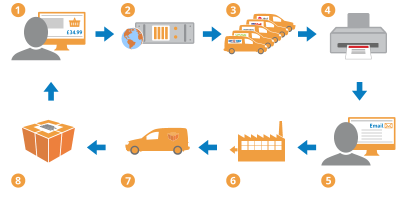Efficient Warehouse Management for Ecommerce Business: A Complete Guide
Warehouse management for Ecommerce business is crucial for success. In the fast-paced world of online shopping, ensuring smooth warehouse operations can make or break your business. In this blog post, we will explore the strategies and practices that lead to efficient warehouse management for Ecommerce businesses.

warehouse management
Why Efficient Warehouse Management Matters
Efficient warehouse management for Ecommerce businesses impacts several key areas. Firstly, it enhances order accuracy. When your warehouse is well-organized, picking and packing errors decrease significantly. This leads to happier customers and fewer returns.
Secondly, efficient warehouse management speeds up order fulfillment. Fast and accurate order processing is vital in Ecommerce. Customers expect quick deliveries, and meeting these expectations boosts your reputation.
Lastly, efficient warehouse management reduces operational costs. Streamlining processes and optimizing space usage minimize waste and increase productivity. This, in turn, leads to higher profit margins.
Organize Your Warehouse Layout
A well-organized warehouse layout is the foundation of efficient warehouse management. Start by categorizing products logically. Group similar items together and place high-demand products near packing stations. This minimizes travel time for workers and speeds up the picking process.
Additionally, consider implementing a bin location system. Assign specific locations for each product and label them clearly. This system helps workers locate items quickly, reducing search time and enhancing efficiency.
Implement a Warehouse Management System (WMS)
A Warehouse Management System (WMS) is a powerful tool for efficient warehouse management. A WMS provides real-time visibility into inventory levels, order status, and warehouse operations. With this information, you can make informed decisions and optimize processes.
Moreover, a WMS automates many tasks, such as inventory tracking and order processing. Automation reduces human errors and increases accuracy. Investing in a robust WMS is a game-changer for Ecommerce businesses.
Streamline Inventory Management
Efficient inventory management is essential for smooth warehouse operations. Start by conducting regular inventory audits. These audits help identify discrepancies and ensure accurate stock levels.
Next, consider adopting a just-in-time (JIT) inventory system. JIT minimizes excess inventory by ordering stock only when needed. This reduces storage costs and frees up space in your warehouse.
Furthermore, use ABC analysis to prioritize inventory management efforts. Classify products into three categories: A (high-value), B (moderate-value), and C (low-value). Focus on managing A-class items more closely to maximize efficiency.
Optimize Picking and Packing Processes
The picking and packing processes are critical for efficient warehouse management. Implementing the right strategies can significantly improve these operations.
One effective method is batch picking. Group similar orders together and pick items in batches. This approach reduces travel time and increases picking speed.
Another strategy is zone picking. Divide the warehouse into zones and assign workers to specific areas. Each worker picks items from their zone, reducing congestion and enhancing efficiency.
For packing, consider using automated packing solutions. Automated systems can quickly and accurately pack orders, reducing the risk of errors and speeding up the process.
Enhance Employee Training and Safety
Well-trained employees are vital for efficient warehouse management. Invest in comprehensive training programs that cover all aspects of warehouse operations. Ensure workers understand best practices for picking, packing, and inventory management.
Additionally, prioritize safety in your warehouse. Implement safety protocols and provide the necessary equipment, such as gloves and helmets. Regularly conduct safety drills to prepare employees for emergencies. A safe and knowledgeable workforce is more productive and reduces the risk of accidents.
Leverage Technology and Automation
Technology plays a significant role in efficient warehouse management for Ecommerce businesses. Apart from a WMS, consider implementing barcode scanning and RFID technology. These tools enhance inventory tracking and reduce manual errors.
Automation can also improve warehouse operations. Automated conveyor systems, robotic pickers, and automated guided vehicles (AGVs) streamline processes and increase efficiency. Although these technologies require an initial investment, the long-term benefits are substantial.
Monitor and Analyze Performance Metrics
Regularly monitoring and analyzing performance metrics is crucial for continuous improvement. Key metrics to track include order accuracy, picking and packing speed, and inventory turnover rates.
Use this data to identify bottlenecks and areas for improvement. For example, if order accuracy is low, investigate the root causes and implement corrective measures. Continuous monitoring ensures your warehouse operates at peak efficiency.
Conclusion
Efficient warehouse management for Ecommerce businesses is essential for success. By organizing your warehouse layout, implementing a WMS, and streamlining inventory management, you can enhance operations. Optimizing picking and packing processes, investing in employee training, and leveraging technology further improve efficiency. Finally, monitoring performance metrics ensures continuous improvement.
In conclusion, adopting these strategies leads to efficient warehouse management for Ecommerce businesses. This not only boosts productivity but also enhances customer satisfaction and profitability. With a well-managed warehouse, your Ecommerce business can thrive in a competitive market.
